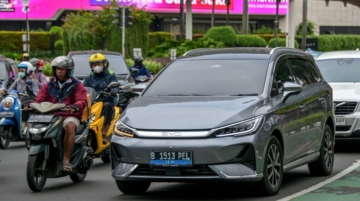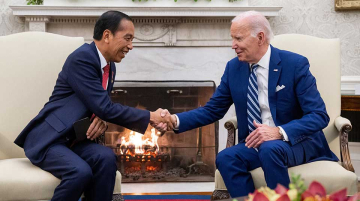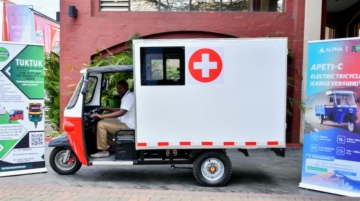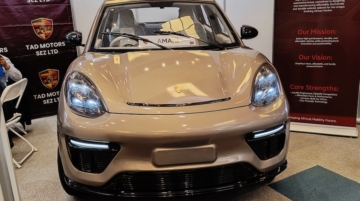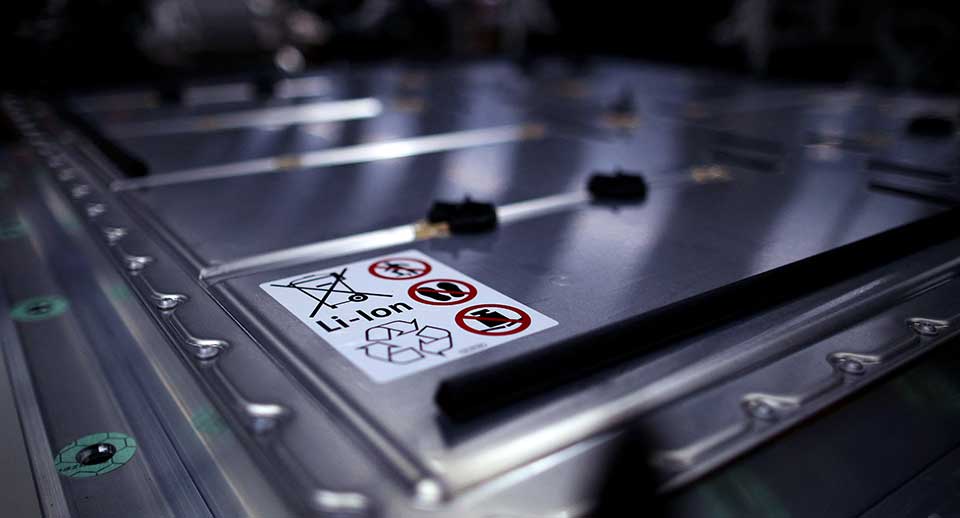
A few weeks ago at the Indonesian auto show, I stood near a cluster of visitors crowding around new electric cars EVs. I noticed three questions that came up repeatedly as people leaned in to quiz the sales reps: How far can it go? Will it last? How safe is it? Whether it was a sedan, a motorbike, or even a bicycle, range, endurance, and safety were the first and most pressing concerns.
That curiosity captures the moment Southeast Asia is in right now. Across the region, electrification is no longer a distant prospect. It’s already part of daily life, on city buses, in fleets of e-motorcycle taxis, in food delivery, and on showroom floors packed with Chinese brands.
Then a new report by the consultancy Rhodium Group revealed that, for the first time, China is investing more in EVs abroad than at home, with three-quarters of that investment going to batteries.
Battery cells are the heart of any electrified vehicle. They store energy, which is then combined into battery packs with cooling systems, safety mechanisms, software, hardware, and controls. But behind the buzz lies a deeper question: Who really benefits from this shift?
China’s EV push into Southeast Asia forces these questions: is the region moving up the value chain or staying on the margins, can it build its own battery and innovation capacity instead of just exporting resources and assembling cars, and will China ever share the core technologies that decide who controls the industry’s future?
I spoke with Bhima Yudhistira, Executive Director of CELIOS, a research institute in Jakarta focused on economics and the energy transition.
Here’s our conversation, lightly edited for clarity.
The Conversation
EDWIN SHRI BIMO: Today, we’re diving into one of the most important industrial shifts of our time: China’s electric vehicle expansion into Southeast Asia. BYD began exporting plug-in hybrids from its Thailand base to Europe. Chinese automakers are setting up shop across the region, not just selling, but also building manufacturing plants. But the core technologies, battery cell production and R&D, remain concentrated in China. So the big question is: Is Southeast Asia gaining real strategic value, or is it being locked into a peripheral role in the global green economy?
BHIMA YUDHISTIRA: Indonesia plays a very central role in EV supply chains because of our abundant nickel reserves. But the key question is whether Indonesia is capturing significant value-added benefits. The answer is no, we’re still exporting semi-processed materials.
One reason is that Chinese FDI in Indonesia comes with very weak requirements for technology transfer or IP sharing. Many smelters producing EV battery components or stainless steel lack meaningful skills transfer between Chinese and Indonesian workers.
Another issue is investment structure: most of it is dominated by Chinese SOEs, with little balance from joint ventures involving local manufacturers in critical minerals.
EDWIN SHRI BIMO: How does Indonesia compare with other ASEAN countries like Thailand, Vietnam, and Malaysia that are also attracting EV investments? Is ASEAN collaborating, or just competing against itself?
BHIMA YUDHISTIRA: If we look at the auto sector, competition is intensifying. Indonesia faces South Korean automakers, who push EVs, and Japanese automakers, who focus on hybrids, while China is aggressively expanding with full EVs.
The problem is that Chinese companies enjoy special treatment. They can import fully built cars from China and sell them in Indonesia before building factories here. In contrast, Hyundai had to build factories first before selling EVs locally. That’s a major policy imbalance.
Right now, Southeast Asia remains an assembly hub, not yet an innovation hub. We aren’t producing battery cells, which are the heart of e-mobility. Cars, motorbikes, buses, three-wheelers, everything relies on battery cells. Until we develop that capacity, we remain stuck at the periphery.
EDWIN SHRI BIMO: So, does Southeast Asia need to climb the value chain and become an innovator? Is it even in China’s interest to allow that shift?
BHIMA YUDHISTIRA: Southeast Asia is still at the periphery of the value chain. We’re in the early stages of mineral downstreaming, while China holds the advanced technologies. Ideally, these should be shared so ASEAN countries can build domestic and regional value chains.
But the challenge is the lack of tech transfer, IP sharing, and skills transfer. There’s a big gap because local vocational schools and universities aren’t producing enough talent to meet industry needs.
Another issue is technology itself. Many Chinese EVs sold in Indonesia use LFP batteries, which don’t require nickel. Yet 80% of Indonesia’s nickel is suited for stainless steel, and less than 10% can be used for EV batteries. So there’s a mismatch between our resource base and the actual technologies in use.
This creates a gap in the electrification roadmap and raises questions about how Indonesian firms can move up the supply chain.
EDWIN SHRI BIMO: That’s a big challenge. But again: does China have the incentive to transfer technology to Southeast Asia so local firms can design and innovate their own EVs?
BHIMA YUDHISTIRA: There’s still a lot of room for improvement. Southeast Asian governments already give big incentives, tax holidays, sometimes up to 25 years. But these don’t translate into technology transfer, partly because agreements like RCEP don’t require Chinese firms to share know-how or IP.
If we want to change this, ASEAN countries need to revise trade and investment agreements to mandate stronger technology-sharing provisions.
China is playing the long game; it sees Southeast Asia as a huge market. But if this relationship is to be truly win-win, there has to be more local benefit: more jobs, more revenue, and stronger local industries. Otherwise, Southeast Asia risks being locked into resource extraction and car imports, with a hollow middle in the value chain.
EDWIN SHRI BIMO: So, what can compel China to transfer technology?
BHIMA YUDHISTIRA: Examples from other regions can guide us. In Brazil, Vale and Chinese partners worked through joint ventures to share technology and boost productivity in iron ore. That shows both sides have responsibilities: host governments must set firm requirements, and Chinese firms must respect them.
Indonesia, for example, must strengthen domestic manufacturing capacity, upskill its workforce, and ensure fiscal incentives actually deliver technology transfer. Each ASEAN country has its own strategy; Vietnam, for instance, is already exporting EVs. Indonesia must focus on filling the hollow middle: building domestic industry, encouraging local firms, and creating supply-chain champions.
If we want short-term wins, electrifying public transportation is a clear first step. Jakarta needs this anyway, for traffic, pollution, and fuel imports. At the same time, Indonesia should aim to become a global player in battery precursors and eventually finished batteries. But if we keep exporting raw materials, those bigger dreams will remain out of reach.
EDWIN SHRI BIMO: Thank you, Bhima. One last question: if you had the chance to advise Xi Jinping directly, what would you say about how China should approach Southeast Asia on this matter?
BHIMA YUDHISTIRA: I would tell him: don’t see Southeast Asia as a distant backyard. See it as a close partner in building a green industrial future. That means fair treatment, real tech transfer, and respect for local development goals. If China does that, it won’t just benefit Southeast Asia; it will bring long-term stability and prosperity for China, too. That’s the real win-win solution.
Bhima Yudhistira is Executive Director of CELIOS, a research institute in Jakarta


